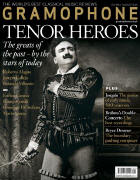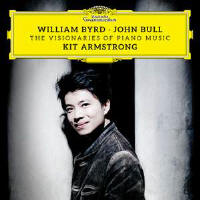Texte paru dans: / Appeared in: |
|
|
Outil de traduction (Très approximatif) |
|
|
Reviewer: Philip Kennicott In a cogent and provocative essay introducing his recording of works by William Byrd and John Bull, pianist Kit Armstrong takes issue with a common fallacy of music history: we have a tendency to think that musical complexity has only increased over time and thus the past is always somehow simpler. Nonsense, he says, citing the two composers he champions here on an album subtitled ‘The Visionaries of Piano Music’. In these works, the keyboardist must master running thirds in the left hand, and complex division and subdivision of the lines, to consider only two technical challenges. Perhaps even more taxing is the intellectual challenge of this music, which can easily sound merely intellectual if performed without fantasy and imagination. Armstrong brings abundant quantities of both to his entirely satisfying rendering of the sometimes austere and eccentric Bull and the amiable and elegant Byrd on the modern piano. Glenn Gould, in another enormously appealing account of some of this repertoire, called forth a sweetly percussive but rather uniform palette, likely his homage to the harpsichord or virginals. Armstrong finds a much wider range of sonority and colour, as broad as any pianist can elicit from the piano. And while there is no lack of contrapuntal clarity in Armstrong’s reading, he is after a different sense of complexity than Gould evoked. Variations of touch and dynamics guide the ear through the multiple voices in these works, but the intent is more about drama and narrative than a sonic X-ray of the score. Indeed, Armstrong finds episodes, entr’actes and telling vignettes in music that is too often performed as a kind of relentless accumulation of mere notes and forward-driving energy. There is push and pull here, and even moments of suspended ennui. The tempos are sensible and the ornamentation is clear and lean. And while it’s tempting to suggest that these are 19th-century readings projecting a romantic sensibility back on to music that is some 400 years old, it makes more sense to see this as an essentially 21st-century account. The historic perspective is broad, the stylistic understanding keen. But the freedom is maximal, which makes for a transformative view of this magisterial music. |
|




